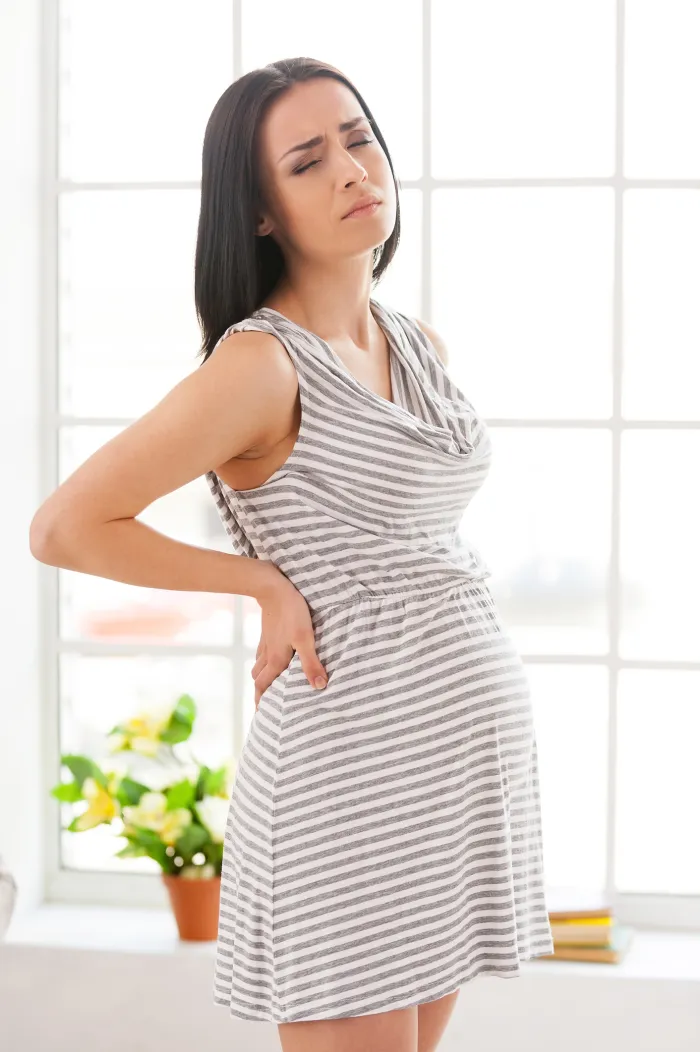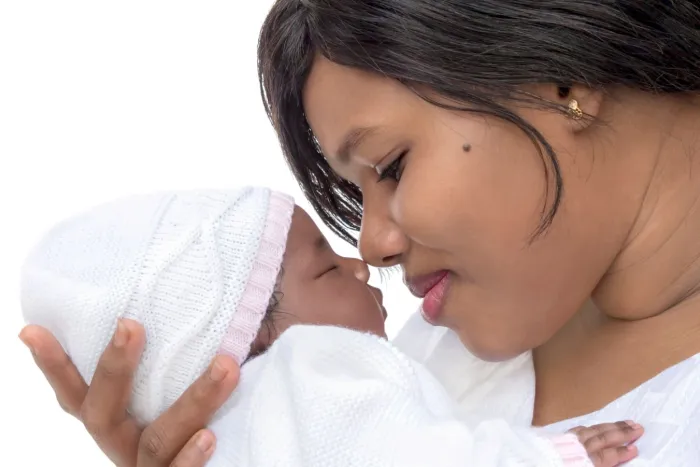LOW BACK PAIN DURING AND AFTER PREGNANCY
Up to 50% of all expectant mothers experience low back pain during their pregnancy

During Pregnancy
Pregnancy is a time of tremendous change in a woman's body. When a woman is first pregnant, her breasts enlarge bringing her shoulders forward. As the pregnancy advances she will gain an average of 25 pounds which is centered in her abdomen. As the abdomen sticks out, the shoulders go back, as do the hips, causing an increased curve in the low back called lordosis.
The distribution of weight carried by the spine is centered in the low back. The low back curve is exaggerated, and the stress in the low back is intensified by the increased weight.
In addition, a hormone in pregnancy called relaxin loosens a woman's joints to facilitate delivery, but may aggravate the strain on the low back by allowing further movement between the vertebrae.
All of these changes in body mechanics and posture translate into sore and strained muscles in the low back. Three-quarters of pregnant women experience low back or pelvic pain. The back pain can begin as early as eight weeks but is most common around 5-6 months, and is due to the changing stress points in the spine and is affected by the amount of weight gain.
Severe back pain at any time during your pregnancy that doesn't respond to the conservative therapies should be evaluated by your health care provider. Sometimes crampy low back pain, especially if accompanied by vaginal bleeding, can be a sign of preterm labor. Back pain associated with fever or burning with urination could be a urinary tract infection or a kidney stone.
Less than 1 percent of low back pain during pregnancy is associated with a herniated disc. Women with disc herniation may have sciatic nerve pain, which starts in the middle of the buttocks and runs down the leg. It can be associated with numbness and tingling in the lower extremities. Numbness in the vaginal area associated with loss of bladder or bowel control can be a sign of significant nerve impingement and should be treated as an emergency.
Like many other discomforts associated with pregnancy, low back pain is usually temporary. The focus during pregnancy should be to relieve aching muscles, support the back and minimize the excessive lordosis. Pregnancy belts can help support the weight of the pregnancy. Keeping the core muscles strong through exercise supports the abdomen better, putting less strain on the back. Stretching exercises can help relieve sore muscles.
Below is a list of helpful ideas to minimize low back pain pregnancy.
- Exercise and stretching like with prenatal yoga can be helpful. Pelvic tilts relieve discomfort and many find swimming valuable for relief. (see the article on rehab in this edition)
- Walking
- Practice body mechanics, and maintain good posture. Stand up straight and tall, holding the chest high with the shoulders back and relaxed.
- While sitting, use a foot stool and lumbar pillow.
- Resting a foot on a stool while standing for an extended time.
- Avoid staying in one position for an extended period. Make frequent position changes.
- Lie down for a few minutes several times a day.
- Be careful with lifting and carrying, especially with purses and bags. Ask for help lifting heavy objects.
- Get plenty of sleep, and take time for rest periods during the day. Sleep on your side with a pillow between your knees.
- Wear low-heeled shoes that offer good arch support.
- Relaxation techniques and prenatal massage may be helpful. Heat or cold to the painful area may relieve symptoms.
- Sacral belts for pregnancy can be helpful to shift weight and help with posture.
- A visit with a physical therapist will help define and guide your program to reduce discomfort.
- In severe cases, you may need pain medicines to get relief. Never take medication without consulting your health care provider.
